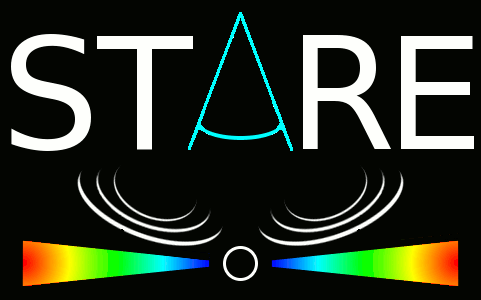
|
||
|
|
||
| The Science Behind STARE | ||
|---|---|---|
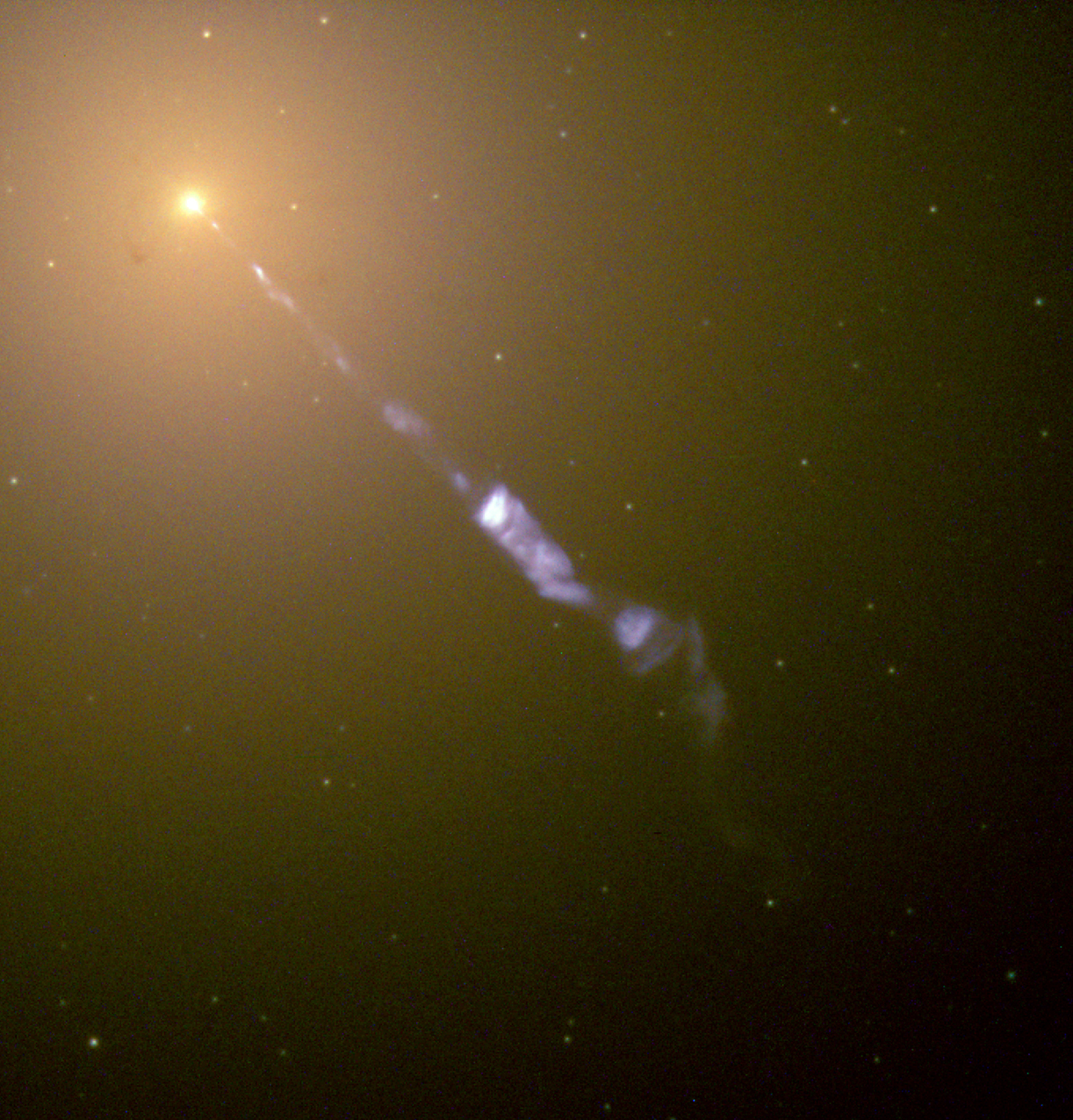 Credit: Hubble Heritage Project
Credit: Hubble Heritage Project
|
Black holes are exotic objects that inhabit the realm of science fact as often as science fiction. They are the most dense objects in the universe, with a gravitational pull so strong that not even light can escape from them. Often pictured as bottomless depressions ripping through the fabric of space-time, black holes by their very nature are mysterious and difficult to study. Yet if the observational difficulties of studying distant objects that emit no light of any kind can be overcome, then any black hole can be fully described with only two numbers: its mass and its angular momentum (spin). | |
| Over the last 20-some years, it has become apparent that every massive galaxy in the universe hosts a supermassive black hole at its center. Contrary to the relatively small black holes that are left behind by dying stars, the black holes at the centers of galaxies have masses between one million and one billion times the mass of the Sun. This incredible amount of matter is packed into a region of space smaller than the Solar System. Even more surprising, however, has been the discovery that more massive central black holes live in more massive host galaxies, implying that somehow the galaxy itself ``knows'' the weight of the black hole it harbors. Considering the fact that the difference in size between a black hole and a galaxy is similar to the size difference between a few millimeters and the radius of the Earth, it is not at all understood why this relationship should exist. Furthermore, it is not understood how these mammoth central black holes start out their existence, nor how they grow over cosmic time. The answers to these questions and others rely on measurements of black hole masses and spins in different galaxies and at different points in the universe's history. Accurate measurements of black hole masses are therefore a key step towards understanding why the universe appears the way it does today. | ||
| All techniques that measure a black hole's mass use stars or gas to investigate its gravitational force. The best black hole mass measurement is for the 4-million solar mass black hole in the center of the Milky Way (Ghez et al. 2008 ApJ 689 1044). The orbits of individual stars at the center of the Galaxy have been tracked over several years, and simple gravitational laws can be applied to determine the mass of the unseen object around which these stars are orbiting. Unfortunately, this technique is only applicable to the Milky Way. All other galaxies in the universe are simply too far away for current telescopes and instruments to track the orbits of individual stars around black holes. Other, less reliable techniques must be employed if we wish to understand more than one supermassive black hole in the universe. | 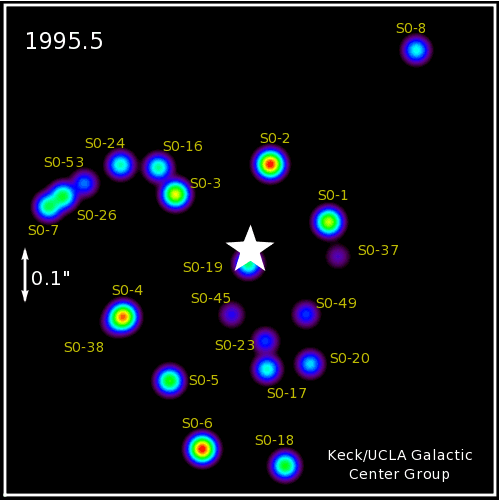 Credit: UCLA Galactic Center Group |
|
| For several nearby galaxies, the motions of stars near the center of a galaxy can be modeled as a population. Rather than tracking individual stars, the average motions of the entire group are determined, thus placing limits on the allowable mass of the central black hole. A similar technique can be used for orbiting gas that has been flattened into a disk in the center of a galaxy. In only a few cases (2-3 galaxies) has it been possible to deduce the mass of the central black hole using both stars and gas so that the resultant black hole masses can be compared (e.g., Neumayer et al. 2007 ApJ 671 132). The distance to the galaxy is, again, one of the limiting factors in these studies, but dynamical mass techniques have resulted in approximately 50 black hole mass measurements (Gultekin et al. 2009 ApJ 698 198). | ||
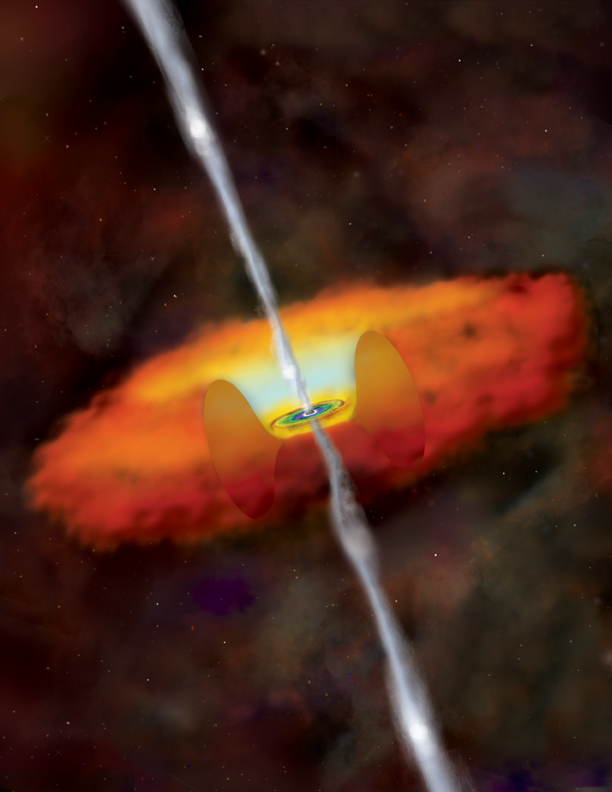 Credit: NASA/CXC/M.Weiss |
A different technique must be employed to determine black hole masses in more distant galaxies. In this case, we look for black holes that are actively accreting matter. The accreting matter is compressed to scales that we cannot resolve with images, but is also heated near the black hole and emits copious amounts of radiation at all wavelengths in the electromagnetic spectrum --- a continuum of light. Fluctuations in the amount of matter falling into the black hole translate to fluctuations in the brightness of the hot gas around the black hole. The variations in brightness travel outwards from the black hole through the hot gas in all directions at the speed of light. If some marker lies at a distance from the black hole, it will be affected by these variations some time after they were initially created. There is a time delay involved, and that time delay depends on the distance of the marker from the black hole. | |
| The hot gas around the black hole is stratified in ionization, meaning that hotter, more ionized gas lies closer to the black hole while cooler, more neutral gas lies further from the black hole. We can therefore use specific emission lines as our markers because the emission lines will arise from regions of gas with specific temperature and density conditions. The most common emission line used in this technique is the 4→2 transition in neutral hydrogen (Hβ) as it is generally bright and conveniently located in the optical part of the electromagnetic spectrum. The time delay for variations in the emission line brightness (relative to variations in the continuum brightness) can be combined with the velocity of gas in the region where the emission line is produced (determined from the smearing of the emission line across many wavelengths) via a simple gravity law to determine the mass of the central black hole (see the figure below). This technique is known as reverberation mapping, or echo mapping, and has been successfully applied to determine the black hole mass in 45 galaxies with actively accreting black holes (Peterson et al. 2004 ApJ 613 682, Bentz et al. 2009 ApJ 705 199). | ||
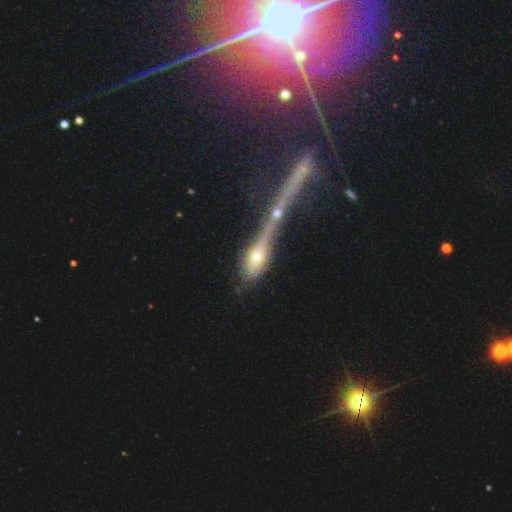 Credit: Sloan Digital Sky Survey |
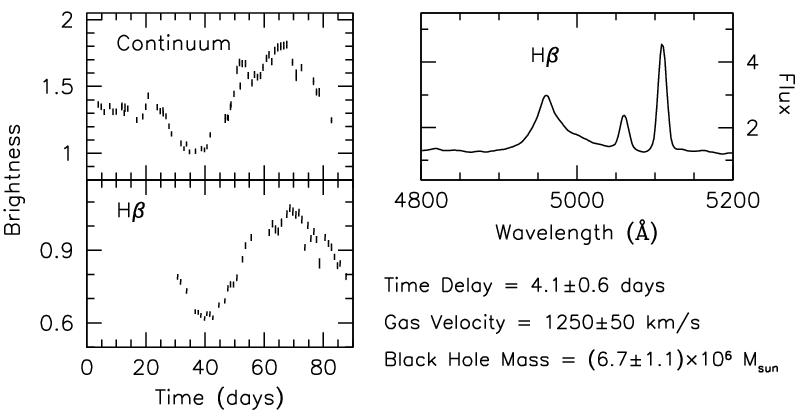 Credit: Misty Bentz |
|
|
STARE is targeting the nearest active galaxies with the intent of
measuring their black hole masses via reverberation mapping as
well as measuring their masses by modeling the motions of the
population of stars in the galaxy centers. The results will allow
us to directly compare these two state-of-the-art black hole mass
measurement techniques, a goal that has only been attained for two
galaxies to date. In addition, STARE is targeting other southern
active galaxies for which a black hole mass measurement would
provide significant value-added information, allowing insight into
the physics behind these extraordinary objects.
| ||
Return to
